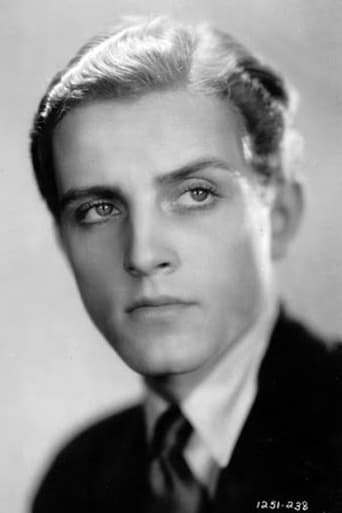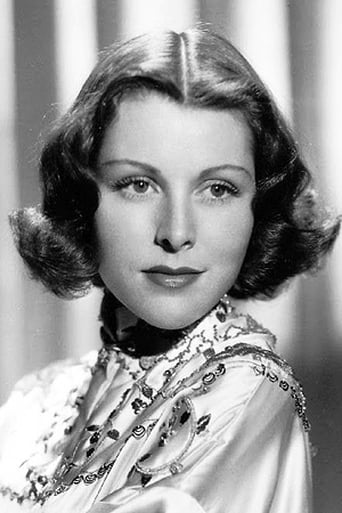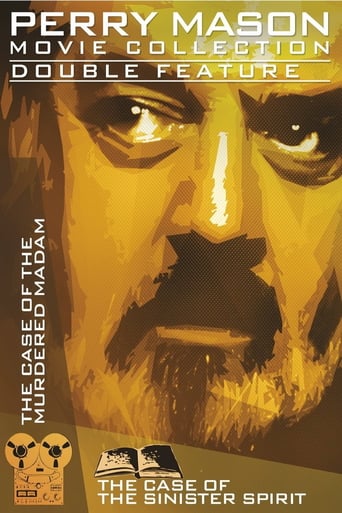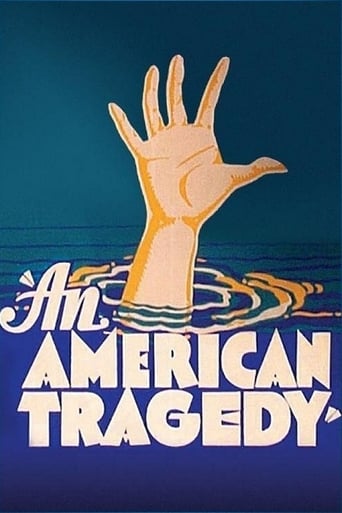
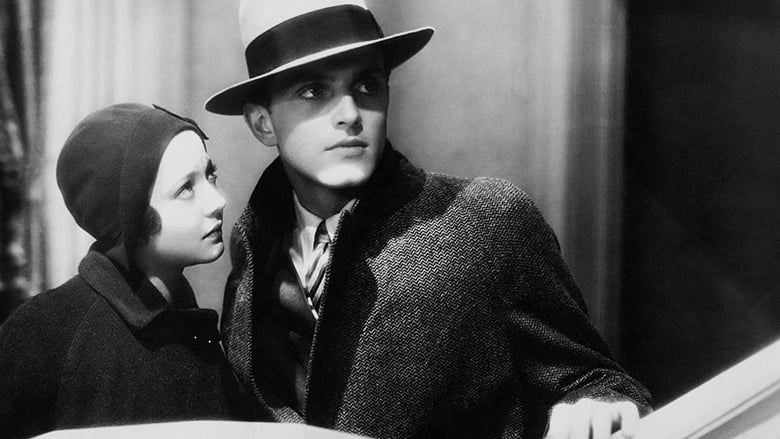
An American Tragedy (1931)
A social climber charms a debutante, seduces a factory worker and commits murder.
Watch Trailer
Cast
Similar titles

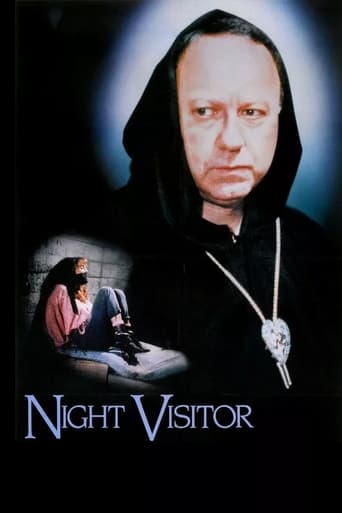
Reviews
Very very predictable, including the post credit scene !!!
Overrated and overhyped
The film may be flawed, but its message is not.
Story: It's very simple but honestly that is fine.
"An American Tragedy" is a novel by Theodore Dreiser. It is a long complex novel, but in its essentials it boils down to this: boy meets girl, boy gets girl pregnant, boy meet another girl he likes better, boy kills the first girl, boy is executed for murder.They have names, of course: the boy is Clyde, the first girl is Roberta, and the second girl is Sondra. Now, Clyde doesn't actually kill Roberta. He planned to drown her and make it look like an accident. He gets her out into the middle of the lake in a rowboat, knowing she cannot swim. But then he thinks he cannot do it. But then he thinks he will. He might as well be picking petals off a daisy: "I kill her, I kill her not, I kill her, I kill her not." Anyway, she ends up falling overboard and drowns just as he was thinking, "I kill her not." Notwithstanding all the planning he put into this murder that he changed his mind on at the last minute but which had the same result anyway, his identity is discovered, he is tried for murder, convicted, and executed.This first film adaptation, released in 1931, has the same title as the novel, and the three principal characters have the same names. The second adaptation, made in 1951, has a title that is different from the novel, "A Place in the Sun," and the characters have different names. Don't ask me why. In most respects, the second adaptation is a much better movie. It was directed by George Stevens, starring Montgomery Clift as Clyde = George; Shelley Winters as Roberta = Alice; and Elizabeth Taylor as Sondra = Angela. (For the sake of consistency, I will continue to the use the names in the novel.)But in one respect, this first adaptation is better, and so much so in this respect that I prefer this version to the second. In the movie "An American Tragedy," Roberta is played by Silvia Sidney. We readily believe in her naïve innocence. She seems like the Roberta of the novel, a woman we like and feel sorry for. As noted above, however, in "A Place in the Sun," Roberta is played by Shelley Winters. I don't know what Shelley Winters was like as a person, but her screen persona simply is not the sweet, innocent virgin for whom we are supposed to have sympathy because she was taken advantage of by a man. On the contrary, she seems suited for roles in which she is a hardboiled broad, as in "Alfie" (1966) or "Bloody Mama" (1970). As a result, when she is taken advantage of by a man in a movie, we are more likely to think she is dumb than naïve.Partly as a result of this difference, we are sad when Silvia Sidney's Roberta drowns. As for Shelley Winters' Roberta, however, we know we are supposed to feel sorry for her, and we do a little bit, but the fact is that we never really mind when Shelley Winters dies in a movie. For example, the fact that she drowns in "The Poseidon Adventure" (1972) does not spoil our sense that the movie has a happy ending. A third movie in which Shelley Winters drowns is "The Night of the Hunter" (1955), murdered by her newlywed psychopathic husband, played by Robert Mitchum. Now, Robert Mitchum's character, Harry Powell, is supposed to be as bad as they come, so you would think they would have allowed him to kill a more likable actress, like Jane Wyatt, for instance, so that we would really think Harry is evil. But they picked Shelley Winters to be his victim so that we would not spend the rest of the movie feeling sorry for her.In other words, if "A Place in the Sun" had starred an actress to play Roberta who would have been more believably innocent and whose death would have been more disturbing, then we would have been appropriately outraged that Clyde would have even thought about abandoning her, let alone make elaborate plans to murder her, just as we are when we read the novel. But with Shelley Winters playing the part, her death really seems to be no great loss, and we end up feeling sorrier for Clyde, played by the likable Montgomery Clift, than we do for Roberta.
***SPOILERS***Based on the true story of 20 year old Grace Brown who was tragically drowned-On July 11, 1906-in Big Moose Lake in upstate New York whom her lover 23 year old Chester Gillette was executed for. In the movie version-the first of two-we have clothing factory worker Roberta Alden, Sylvia Sidney, get romantically involved with her boss handsome Clyde Griffiths, Phillips Holmes. It's Clyde who after impregnates Roberta while on a date with her later falls madly in love with pretty and rich socialite Sondra Finchley, Frances Dee, finding he's stuck with no way out of the mess he got himself into.Clyde at first tried to get Roberta to have the couples soon to be born child aborted which in him being deeply religious is against all the principles that he was brought up by his bible thumping mom Mrs. Asa Griffiths, Lucille La Veme, with. Conflicted in just what to do Clyde decides to take Roberta out to the country for the weekend and plan what to do next. Out rowing on the middle of Big Moose Lake things go terribly wrong with Roberta, who can't swim, slipping as Clyde is about to take her picture and falling into the water and drowning herself. That's with Clyde in a panic taking off and swinging back to shore some 500 feet away when he was just a few feet away where Roberta ended up drowning.Arreated and tried for the murder of Roberta Alden Clyde gets no sympathy from anyone not even his defense attorney Mr. Belknap, Emmett Corrigan, in how cowardly he acted in letting Roberta drown without lifting a finger to save her. The verdict is a forgone conclusion with Clyde convicted of 1st degree murder and sent to Sing Sing to be executed. What we find out is that despite being a coward and two timing heel Clyde in fact, in his own words, didn't really murder Roberta but in being more interested in saving his own neck made no attempt to save her. Told by his mom to take it-his punishment-lake a man Clyde for the first and only time in his life accepts responsibility for his actions: Which in his case was not murder but leaving the scene of an accident and bravely goes to his fate in the state electric chair. P.S Remade 20 years later in 1951 as "A Place in the Sun" together with Montgromery Cliff and Elizabeth Taylor as George Eastman & Angela Vickers as the star stuck lovers with Shelly Winters as the tragic left out on the cold or at the bottom of Big Moose Lake Alice Tripp or the Roberta Alden character in the 1931 original.
A stark retelling of Theodore Dreiser's naturalistic novel about love and social status. The author sued the production company for the liberties they took with the story. If Dreiser thought that von Sternberg's "An American Tragedy" took too many liberties, he must be known to the other cadavers as Ol' "Pinwheel" Dreiser after 1951's "A Place in the Sun," directed by George Stevens in an echt-romantic mode.Well, just look at the name changes from Dreiser to Stevens, for instance. "Clyde Griffiths" becomes "George Eastman." That in itself is an improvement over Dreiser. Who wants to sympathize with a guy named Clyde? Besides, the story -- in the book and in both films -- is set in upstate New York. And Rochester is in upstate New York, where "Eastman" is a name to conjure with. Look up Eastman School of Music in Rochester, or Eastman-Kodak. If George is less alienating than Clyde, then certainly Alice Tripp in 1951 is a quantum leap in pathos beyond 1931's Roberta Alden, and Angela Vickers is a rich improvement over Sondra Finchley.But the 1931 version, whatever Dreiser may have thought of it, is by no means bad. It's not nearly as manipulative as the later version, with Montgomery Clift looking so young, beautiful, and brooding. It's important to remember that von Sternberg was operating under the technological strictures of the period. The sound is crummy. That's because recording techniques were primitive in 1931. There were mikes hidden in boutonnieres, coffee cups, table lamps, and various other props like toilet facilities. (Well, not that.) In this movie, Clyde (Philip Holmes, Philip Holmes in a deliciously ambiguous performance) comes from a stern but loving religious family. He runs into a rich relative who gives him a job out of pity in a factory in New York state, near the town of Fonda, named after THAT family. Clyde is a lonesome young fellow, naive with a dash of the engaging charm that obvious ignorance sometimes brings with it. Against the rules he courts and seduces factory girl Roberta (Sylivia Sidney) and she winds up preggers. This puts Clyde's morality in a vice. Illegitimate children weren't looked on with pride in 1931 and their mothers were a disgrace in every respect. Meanwhile, Clyde is more and more estranged from Roberta because he's fallen in with the rich crowd of his relatives and because he's now in love with Sondra Finchley (Frances Dee, looking good. In fact, she looked even better with the passage of years: check out "I Walked With a Zombie"). Sondra takes Clyde out in a speedboat for a spin on the same lake where the other girl is about to meet her fate.What to do, what to do? The obvious answer is to take Roberta out in a rowboat to an isolate bay then throw the unswimming slut overboard. Clyde initiates the plan but once out in the boat finds himself incapable of murder. He spills the beans about his situation. Roberta, understandably upset, leaps to her feet and advances towards him until not only she but the rowboat are upset. She drowns while Clyde swims towards shore. It doesn't take the law long to pin it on Clyde, who is not only morally weak but pretty dumb. The courtroom scenes that follow may strike a modern viewer as overblown -- all the shouting and nastiness -- but a peek at the trial proceedings of Bruno Richard Hauptmann in the case of the Lindbergh baby kidnapping reveals that trials weren't nearly as decorous then as they are now. At any rate, both fictitious Clyde and factual Hauptmann suffer the same fate.And it's in these last scenes that Dreiser's novel beats both film versions. His description of the prison is captured with precision, the floor plan, the stone walls, the bars. His sketch stands out because elsewhere his prose can become unbuttoned: "She wore ruby earrings in her ears." And the somewhat air-headed rich girl, who speaks baby talk to Clyde, as in, "Is my widdle pooky wooky saddy waddy?", disappears from the plot at the first hint of scandal, never to be heard from again, thank God. That's as it should be.You won't regret having watched this if you have the chance.
Theodore Dreiser's lengthy 1925 novel was based on the sensational 1906 murder trial of Chester Gillette, who murdered his working class girlfriend in order to marry into a socially prominent family. His book deals with a man who wants to escape the poverty and hopelessness of his background only to be engulfed by the wealth he longs for. It became a successful Broadway play with Miriam Hopkins as Sondra, the society girl.Initially, Paramount engaged the prestigious Russian director Sergei Eisenstein as director but the deal fell through, then flamboyant director Josef Von Sternberg was hired. Coming in the middle of his Marlene Dietrich pictures the film dripped with atmosphere as he filmed scenes through beaded curtains, venetian blinds and lakeside trees. Even though Sylvia Sidney and Phillips Holmes last co-starring feature was a movie so bad that no director wanted credit ("Confessions of a Co-Ed") they were both immediately signed for "An American Tragedy". Holmes, a very sensitive actor, found the role of a life time as Clyde Griffiths, who we first meet working as a bellhop at the luxurious Green- Davison Hotel. His opportunism is apparent from the start as he would rather attend to the female guests every need than to hobnob with his fellow workers.When out with friends he is involved in a hit and run (he is not the driver) and though his mother (Lucille LaVerne, in a really over the top performance) who runs the local mission, pleads with him to go to the police, being a coward he refuses. He flees to New York where he has some wealthy relations and it isn't long before, with lying and wheedling, he has attained the post of foreman in the Griffiths Shirt Factory. He meets pretty Roberta (Sylvia Sidney), a factory girl and seems genuinely attracted to her, at the same time he meets his wealthy relatives and is taken up by them. Clyde and Roberta begin their affair, even though the factory frowns against romance in the workplace. Roberta is manipulated by Clyde (with promises of everlasting devotion) into letting him come up to her room. About the same time he meets Sondra (beautiful Frances Dee), a society girl and then conveniently forgets about Roberta. Roberta has some news for Clyde that he doesn't want to hear as he feels he has really fond his niche in life with Sondra by his side.After reading in the paper about an accidental drowning, Clyde begins to plan his way out - he takes Roberta out on the lake, knowing her fear of water. He plans to capsize the boat and let her drown but when faced with the act, he can't go through with it. Roberta is frightened and accidentally falls in but Clyde does nothing to save her and swims away.The last third of the film is devoted to the trial with Irving Pichel giving a gripping performance as D.A. Mason, who is determined to find Clyde guilty. Clyde's coldness and amoral attitude, plus the fact that he is already on the run from a fatal car accident does not get sympathy from the jury. Only at the very end, when he admits to his mother that he did intend to kill Roberta but changed his mind does the audience feel any sympathy for him.There is no comparison between Sylvia Sidney and Shelley Winters (who played Roberta in the 1951 remake). Sidney, a far superior actress, gave Roberta a naive sensitivity, Winters made Roberta seem coarse and crude. Frances Dee, who proved she was a good actress in films like "The Silver Cord" and "Blood Money", a couple of years in the future, in 1931 was just a very pretty face. I think, by making Sondra just a pretty cardboard cut out society girl (in comparison to Elizabeth Taylor's more sensitive portrayal) Sternberg keeps the emphasis on Clyde, defining his callousness and spinelessness and taking away any sympathy the audience may have felt for him.Highly, Highly Recommended.
